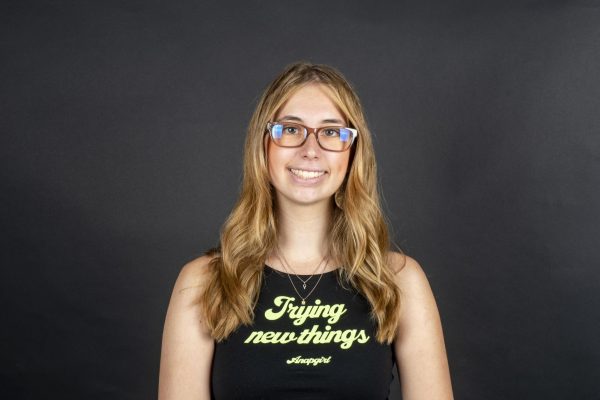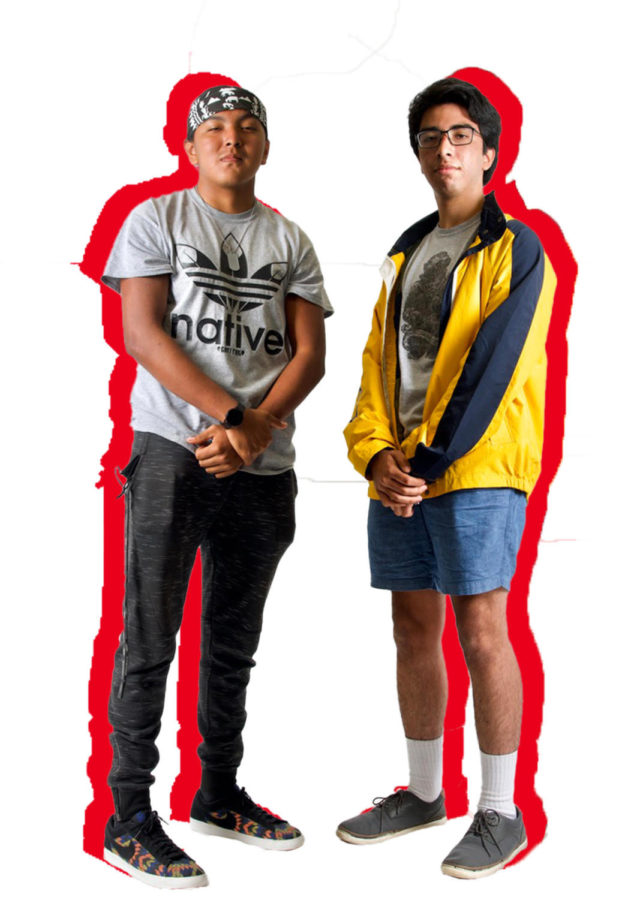Tyler Notah and John Bradley celebrate their cultures for Indigenous Day
“In 1492, Columbus sailed the ocean blue”, is the opening line of the well-known nursery rhyme, by Jean Marzollo, that reemerges every second Monday in the month of October. However, what was once used to remember the history of American colonization has now become a day that celebrates the people that were there before the European settlers: the Native Americans.
Though Columbus Day was made a national holiday in 1937, it wasn’t observed as Indigenous People’s Day until 1992. The change was due to the acknowledgement of the harsh treatment towards Native Americans by Columbus and other European explorers during the colonization of America.
Senior Tyler Notah is a member of the Navajo Nation, whose reservation is located in the Four Corners of Nevada, Utah, Arizona and New Mexico. Notah was born and raised here in the South Bay, but his grandparents, who lived on the Navajo Reservation in Utah, came to California in the 1960s after graduating from Inner Mountain boarding school. Notah’s grandparents chose Southern California because “the Federal Government promised them housing and jobs in Los Angeles, so they were discouraged to return back to the reservation.”
Despite having to leave the reservation, Notah’s grandparents were able to build a life in California for themselves and for future generations.
“The government did live up to their promise. My grandpa became a welder and my grandma was actually a truck driver […] I still have my grandma’s old GMC 1970s truck that she used to drive from here all the way to New Mexico,” Notah said.
Though Notah and his family have continued to live here in California, they make efforts to stay connected to their roots.
“I’ve visited The [Navajo] Nation to attend events with my family and to go to places like Shiprock Fair, and also see my uncle who lives on the Cheyenne River Reservation in South Dakota,” Notah said.
Over the years, it has become a tradition for Notah and his family to go back to the reservation to visit relatives and explore their native land.
“When I was younger, going back to the reservation was a learning moment for me but I was also having fun while doing it; sticking my head out the window, looking at all of the mountains,” Notah said.
Notah, growing up immersed in the Native American culture, learned the traditions and food styles of the Navajo.
“I’ve been participating in film screenings, attending powwows and volunteering at an organization called the Wild Horse Native American Association. I also chose to fundraise by serving frybread and Indian tacos,” said Notah.
Notah has also expressed appreciation for his non-indigenous friends when they joined him in some of the powwows, saying that it was a “really good experience for them to be a part of it.”
Senior John Bradley, a member of the Cherokee and Comanche tribes, takes a great interest in his Native American Traditions as he also attends powwows as a way to celebrate his culture.
“Powwows are very family-oriented events,” Bradley said. “Each one of us would know certain dances to contribute. My father actually used to do a game day at the museum, when we were younger, to teach other people how to do Native American games.”
Growing up, Bradley has always been proud of his heritage, and it helped him form not just his identity but also the way he views the world and everyday activities.
“Our heritage is the knowledge of what it was, how we did everything and how everything led up to the way it is now,” Bradley said.
In Bradley’s eyes, Indigenous People’s Day is an occasion to accredit Native Americans for how far they’ve come in history.
“It’d be nice for people to know what it was, what it meant and acknowledge that it’s happening,” Bradley said.
For Tyler Notah, identifying as Indigenous brings him a lot of pride and honor because he is able to represent the voices of those that were silenced in the past.
“I don’t feel ashamed of my heritage. Some people may have picked on me about it but it just didn’t really affect me like that. I was taught that we [Native Americans] were very strong people,” Notah said.
With Indigenous People’s Day came a great deal of gratification for Notah because this was a chance for others to learn more about his culture. From Notah’s perspective, understanding Native American history is a looking glass into American history.
“The day is an opportunity for us to really look back and respect our past, and also respect our traditions and realize that we wouldn’t be the same person without our traditions,” Notah said. “For people that are not indigenous, I would say, if you are really curious about it, go ask someone who is indigenous or ask a teacher that knows everything about it.”

Hola my friends. My name is Marley. I love dogs. Dogs are the best creatures to ever walk the Earth. If you disagree then, by all means, come over to my house and meet my dog, Sirius - He'll...



